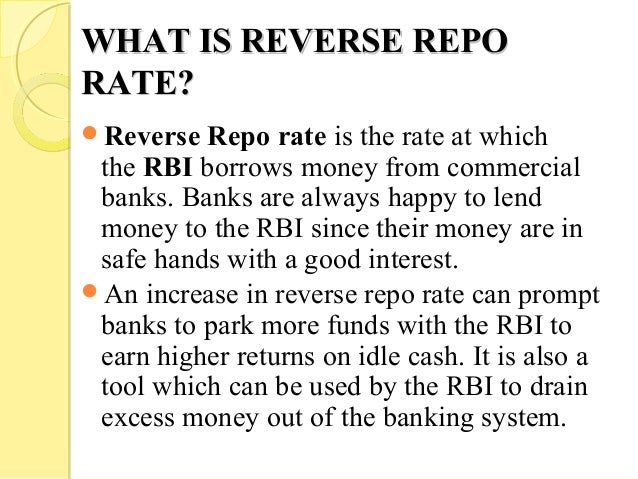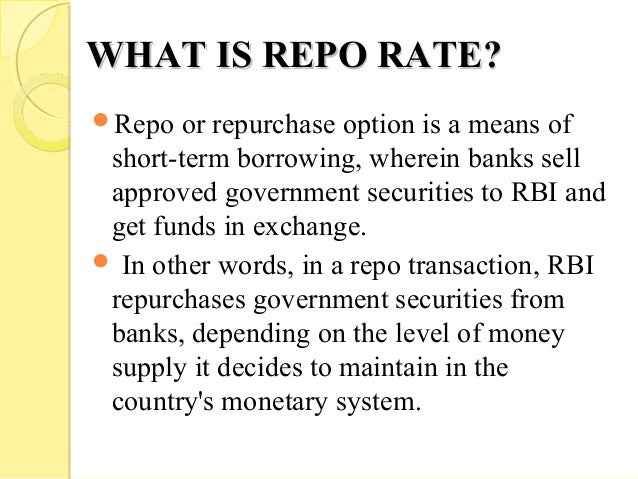Why in news?
• Unlike in the past, when the RBI used its repo rate as the main instrument to tweak the interest rates, presently, it is the reverse repo rate that is effectively setting the benchmark.
About:

• The repo rate is the rate at which the RBI lends money to the banking system (or banks) for short durations. The reverse repo rate is the rate at which banks can park their money with the RBI.
• Under normal circumstances, that is when the economy is growing, the repo rate is the benchmark interest rate in the economy because it is the lowest rate of interest at which funds can be borrowed and, as such, it forms the floor rate for all other interest rates in the economy.
• However, over the last couple of years, India’s economic growth has decelerated sharply. Also, banks are not lending to businesses, partly because banks are too risk-averse to lend and partly because the overall demand from the businesses has also come down.
• Recognising this, the central bank has cut the reverse repo rate more than the repo twice in the spate of the last three weeks.
• The idea is to make it less attractive for banks to do nothing with their funds because their doing so hurts the economy and starves the businesses that genuinely need funds.

For more such notes, Articles, News & Views Join our Telegram Channel.
Click the link below to see the details about the UPSC –Civils courses offered by Triumph IAS. https://triumphias.com/pages-all-courses.php

